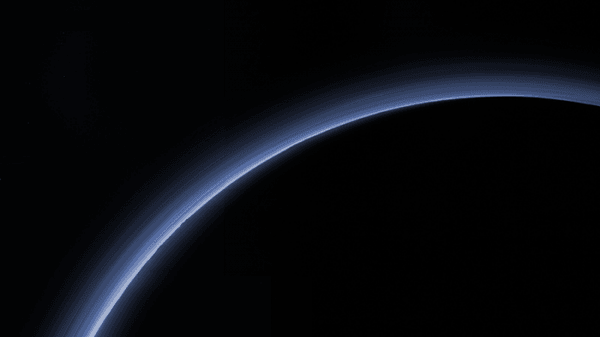When Pluto passed in front of a star on the night of August 15, 2018, a Southwest Research Institute-led team of astronomers had deployed telescopes at numerous sites in the U.S. and Mexico to observe Pluto’s atmosphere as it was briefly backlit by the well-placed star. Scientists used this occultation event to measure the overall abundance of Pluto’s tenuous atmosphere and found compelling evidence that it is beginning to disappear, refreezing back onto its surface as it moves farther away from the Sun.
The occultation took about two minutes, during which time the star faded from view as Pluto’s atmosphere and solid body passed in front of it. The rate at which the star disappeared and reappeared determined the density profile of Pluto’s atmosphere.
“Scientists have used occultations to monitor changes in Pluto’s atmosphere since 1988,” said Dr. Eliot Young, a senior program manager in SwRI’s Space Science and Engineering Division. “The New Horizons mission obtained an excellent density profile from its 2015 flyby, consistent with Pluto’s bulk atmosphere doubling every decade, but our 2018 observations do not show that trend continuing from 2015.”
Several telescopes deployed near the middle of the shadow’s path observed a phenomenon called a “central flash,” caused by Pluto’s atmosphere refracting light into a region at the very center of the shadow. When measuring an occultation around an object with an atmosphere, the light dims as it passes through the atmosphere and then gradually returns. This produces a moderate slope on either end of the U-shaped light curve. In 2018, refraction by Pluto’s atmosphere created a central flash near the center of its shadow, turning it into a W-shaped curve.
Read more at Southwest Research Institute
Image: When Pluto passed in front of a star on the night of August 15, 2018, a SwRI-led team of astronomers measured the abundance of Pluto’s atmosphere, shown here in New Horizons 2015 flyby data, as it was briefly backlit by the well-placed star. These data indicate that the surface pressure on Pluto is decreasing and that its nitrogen atmosphere is condensing, forming ice on its surface as the object moves away from the Sun. (Credit: NASA/JHU-APL/SwRI)


